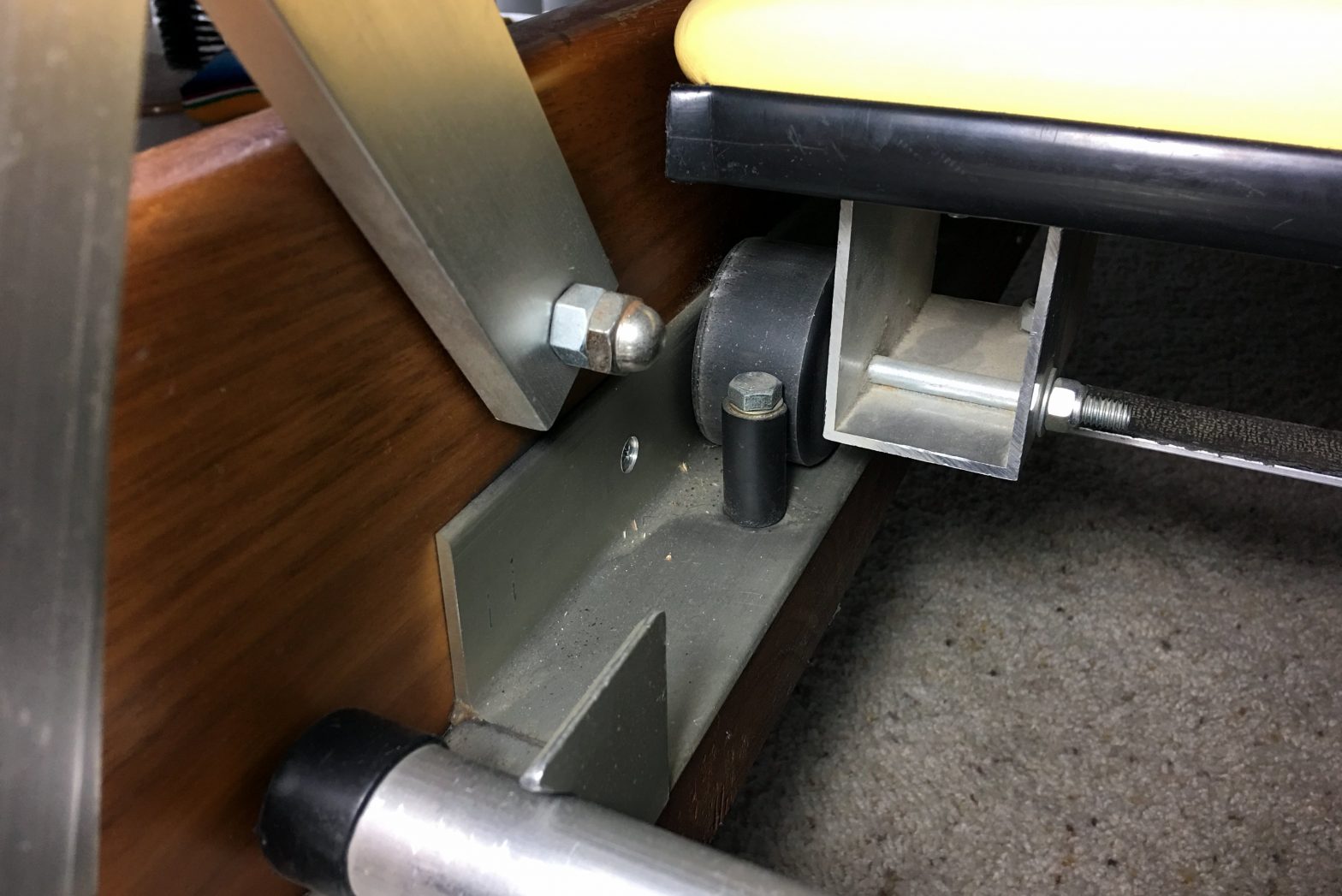
One of the many little pleasures in my own Pilates session is experiencing a smooth and quiet carriage ride. While working out, I want to be able to focus entirely on how my body is feeling rather than running through all the possible causes for the bumps.
If your Reformer carriage has developed some bumps along the way, here is a quick procedure to help pinpoint the source of the bumps and fix it.
- Are your rails and wheels clean? This is extremely important because most of the time the wheels or the frame rails will actually have dirt, debris, or little rubber flakes stuck to them which can cause bumps. If you’ve cleaned BOTH the rails and wheels, then you know that’s not the cause and you can move on. (You can read more about cleaning your rails, here.)
- During footwork, is the bump rhythmic or does it occur only once? If the bump is regular, about every 5 inches or so, it is likely coming from a wheel. If it only occurs once during each repetition of footwork, it could be the rail.
- Your bumpy wheels could be the carriage (rolling) wheels which support the weight of the carriage, or the side wheels, which control how much side-to-side motion the carriage has within the frame.
- To relieve side wheel bumpiness, ensure there is between 1/8” and ¼” side-to-side play (video example, here). Sometimes you will notice that the wheels are too tight against the inside of the frame and they cannot roll in a perfect circle. Side wheels do not have to be in contact with the frame 100% of the time.
- Carriage (rolling) wheels could be bumpy because they’ve sat still too long under the heavy carriage, causing flat spots on the rubber wheel surface. Or, they could be more grindy (that’s a technical term, by the way!) like sandpaper, in which case it’s likely the bearings inside the rubber wheel causing the problem. In either instance, replacing your rolling wheels will solve the problem.
- Some Reformer frames, like the Studio Reformer, have holes on one side at the head end for the carriage stopper. Be sure that if you are only feeling the bump at the maximum range of your footwork that you aren’t just rolling over that hole. There’s nothing you can do about this feeling, but if you don’t realize it, you could be searching for the cause for a long time.
- If the bump only happens once and you know it’s not the carriage stopper holes, run your fingers along the surface of the frame rail to check for any obvious deformation.
- If the bumps don’t happen during footwork, but do happen when you use the straps, perhaps your pulleys or ropes are to blame.
As you can see, bumps can be a multi-factorial problem. Stay tuned for Part II where I discuss how to troubleshoot your ropes and pulleys for mystery bumps.
Happy Reforming!
Pssst! This post also appears over on the Balanced Body blog, here.
